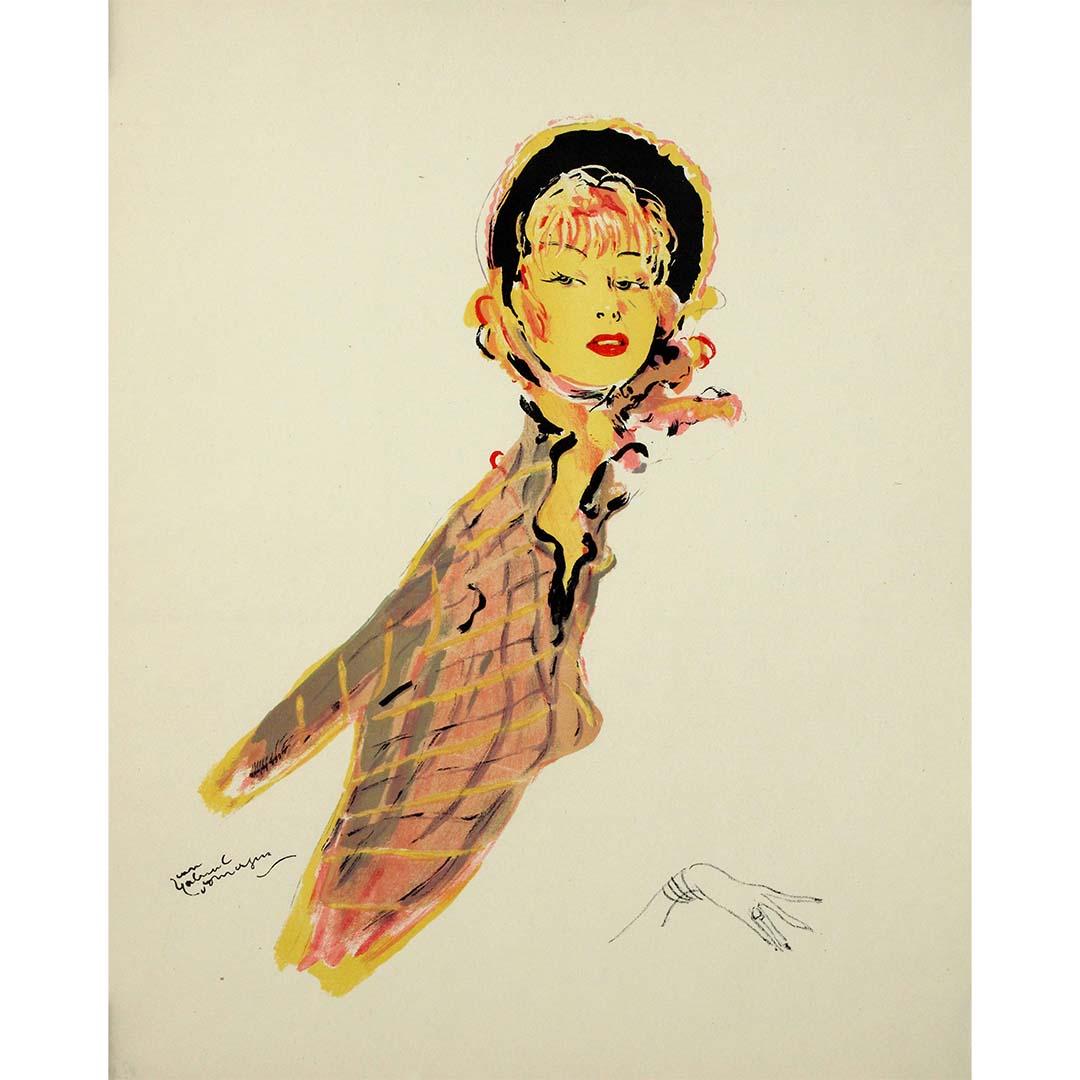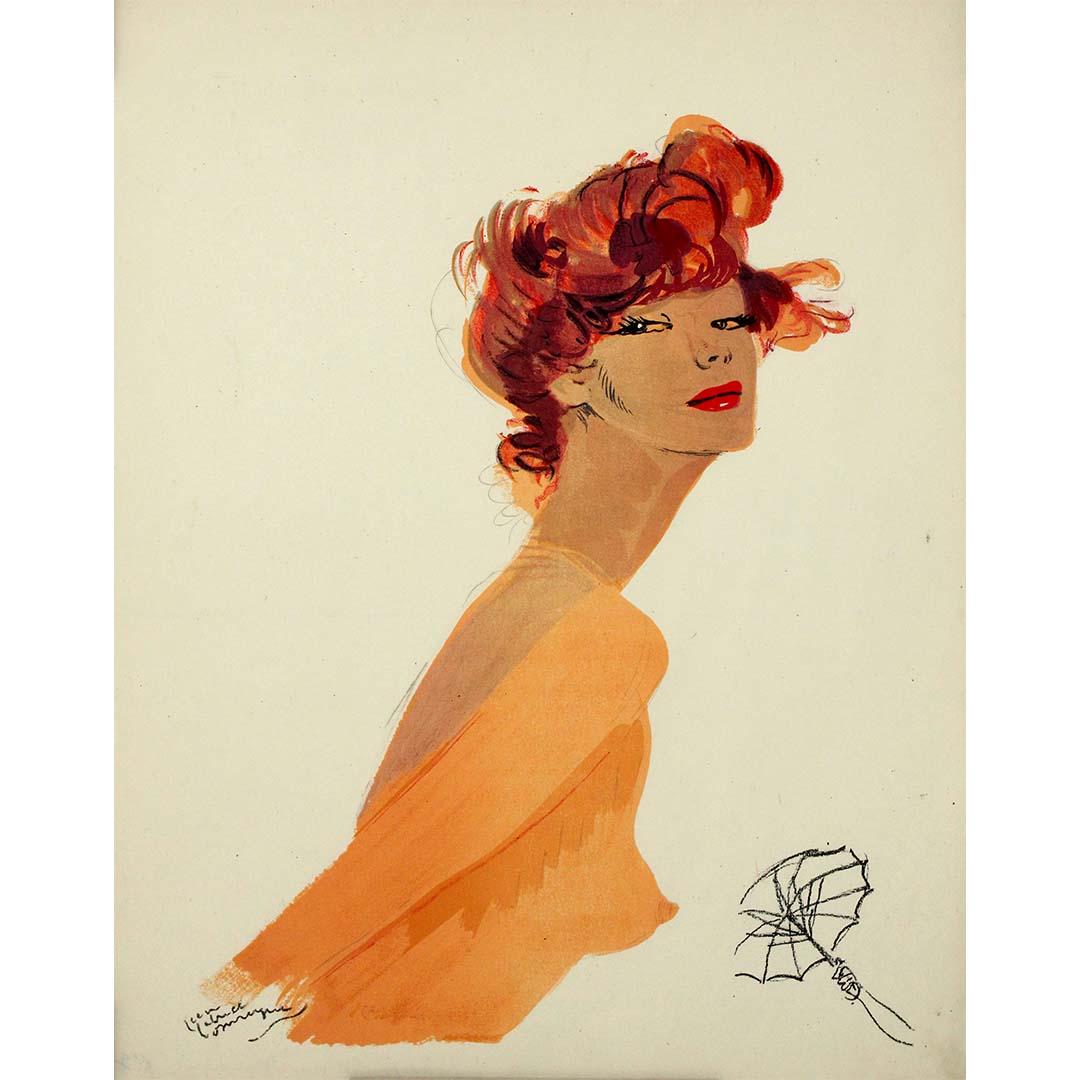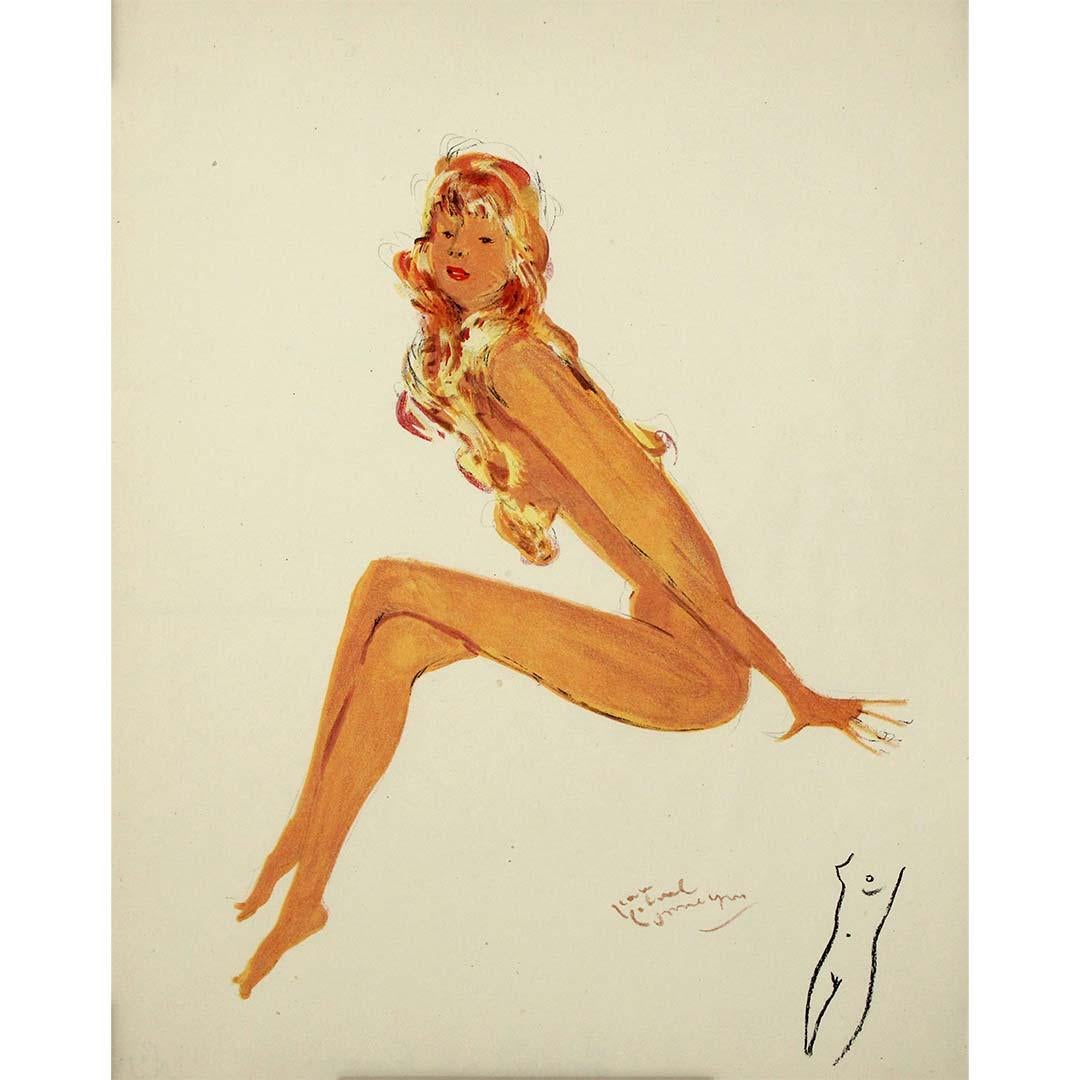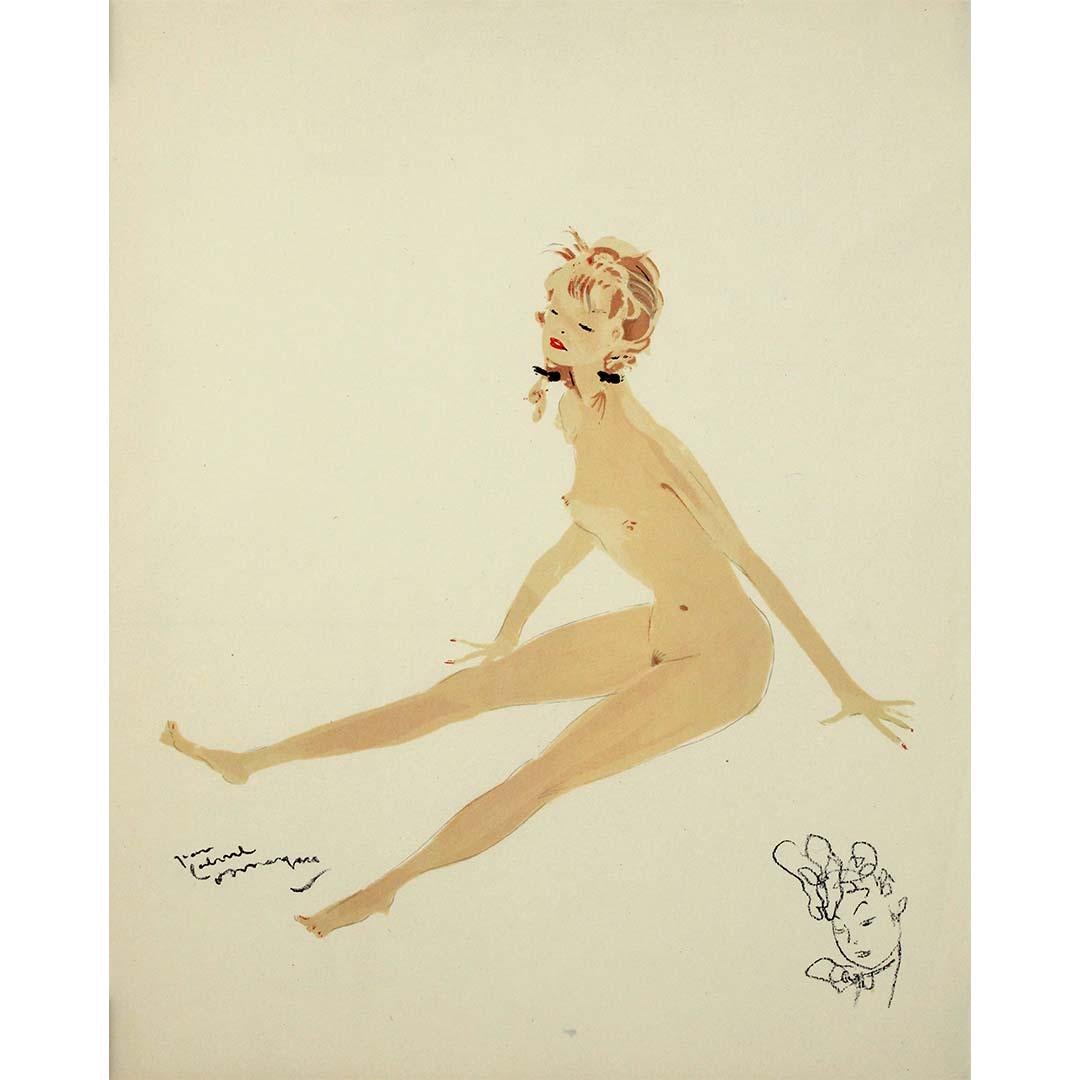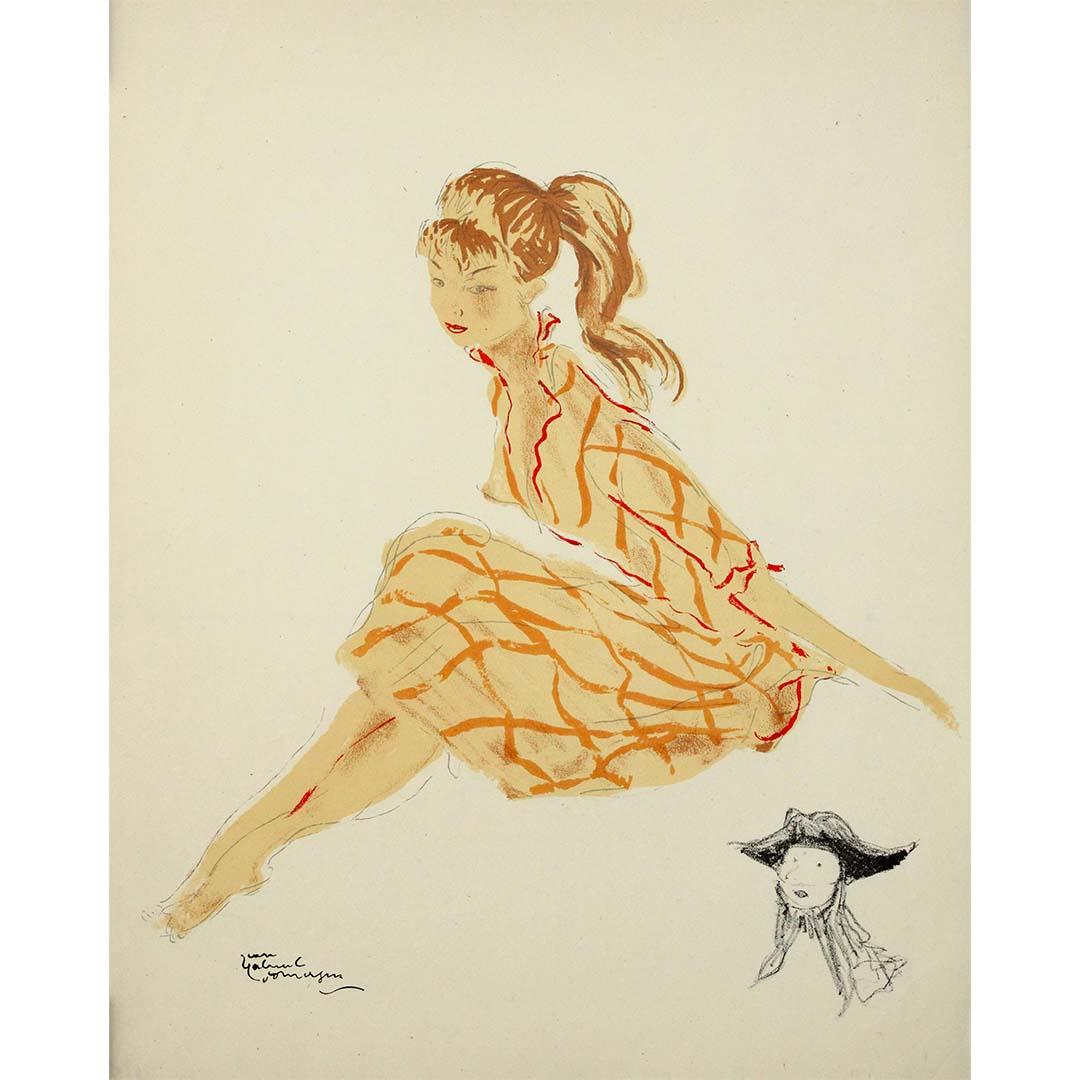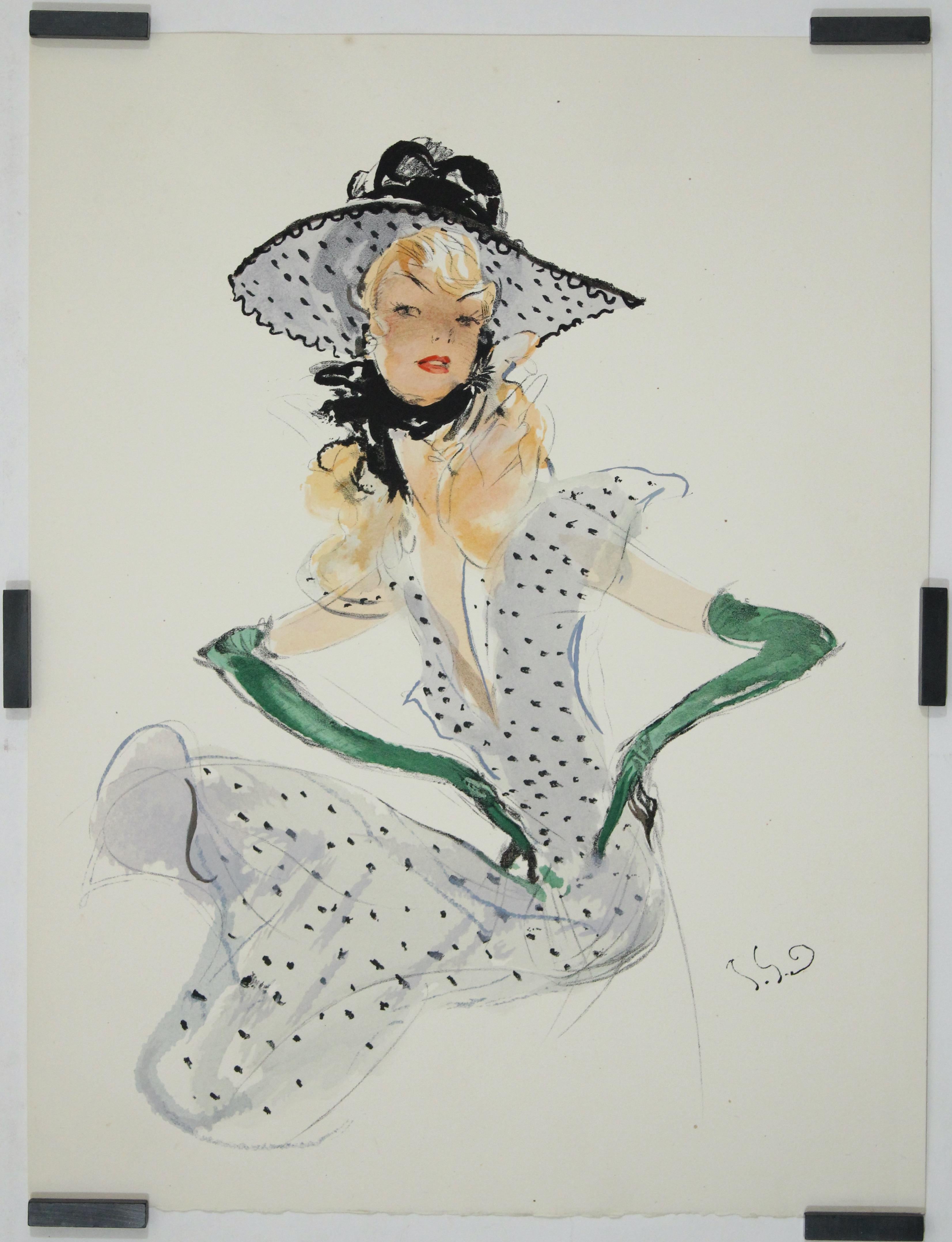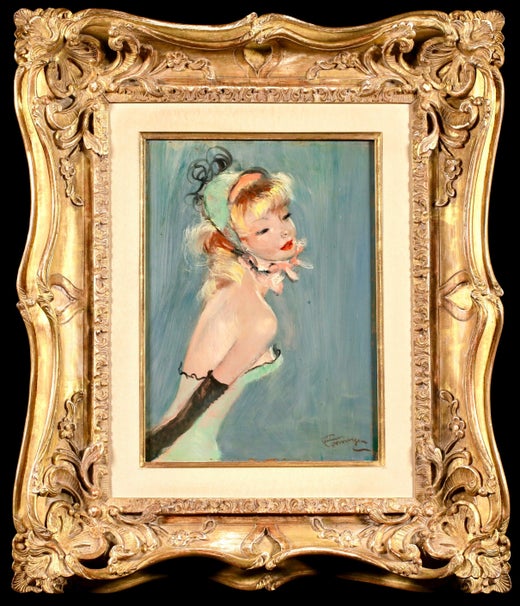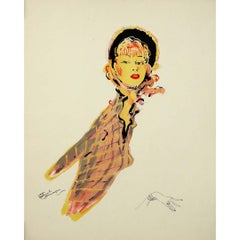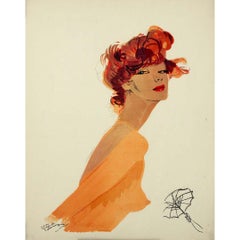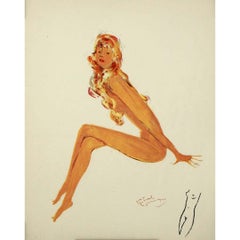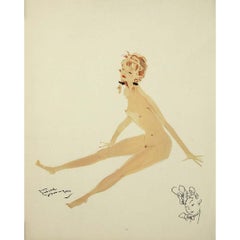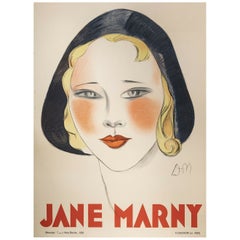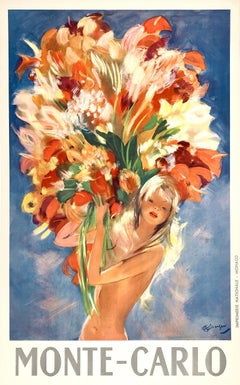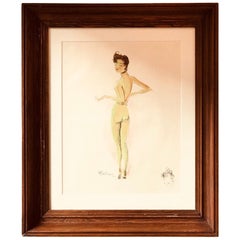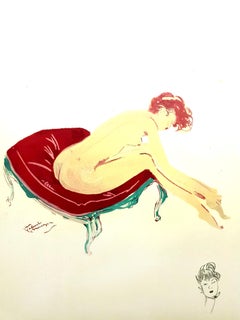The 1948 original illustrated book titled "Quand on parle d'amour" by Jean-Gabriel Domergue is a beautifully crafted example of mid-20th-century French book art, blending the poetic musings of Pierre Harel-Darc with the refined and elegant illustrations of Domergue, a celebrated French painter and illustrator known for his depictions of Parisian high society and graceful female figures.
Jean-Gabriel Domergue: The Artist
Jean-Gabriel Domergue (1889–1962) was a prominent French painter, often credited as the inventor of the "pin-up" style in France. He became renowned for his depictions of fashionable Parisian women, often characterized by elongated figures, elegant postures, and a refined, almost ethereal beauty. Domergue’s illustrations for "Quand on parle d'amour" are a testament to his ability to capture the essence of femininity, romance, and the sophisticated allure of the Parisian lifestyle.
In this book, Domergue’s illustrations are not mere decorations but serve as visual interpretations of Harel-Darc’s poetic themes. His watercolors, translated into lithographs, echo the elegance and subtle emotional undertones of the poems, creating a harmonious blend of art and literature.
The Poetry: Pierre Harel-Darc
Pierre Harel-Darc’s "Quand on parle d'amour" is a poetic exploration of love—its emotions, complexities, and the often unspoken nuances that come with it. The poetry is deeply reflective, capturing both the joy and melancholy of romantic experiences. Harel-Darc’s words find a perfect counterpart in Domergue’s illustrations, which evoke the tender and passionate feelings expressed in the text.
Lithography and Colorization
The illustrations were originally created as watercolors by Jean-Gabriel Domergue and were then lithographed and colored by Maurice Beaudet, a skilled lithographer known for his expertise in translating watercolor works into lithographic prints. The lithographs maintain the soft, delicate quality of the original watercolors, ensuring that the vibrant yet subtle color palette enhances the overall aesthetic of the book.
Beaudet’s work brings Domergue’s illustrations to life on the printed page, allowing the colors to evoke the romantic and emotional atmosphere that the poetry conveys. This collaboration between artist and lithographer demonstrates a high level of craftsmanship and artistic synergy, making the book not only a literary work but also a piece of fine art.
Edition Details and Production
The edition of "Quand on parle d'amour" was printed in a limited run of 350 copies, making it a rare and sought-after collector’s item. The breakdown of the edition is as follows:
280 copies were printed on vélin du Marais, a high-quality French paper known for its durability and fine texture. The copy in question is numbered 80, one of the 280 copies on this prestigious paper.
In addition to its rarity, this particular copy is enriched with autograph inscriptions from both the author, Pierre Harel-Darc, and the illustrator, Jean-Gabriel Domergue. These handwritten dedications on the half-title page add significant value to the book, making it a unique item with personal connections to its creators.
Condition
This copy of "Quand on parle d'amour" is described as very well preserved, with the contents of the book itself remaining in excellent condition. However, the slipcase that originally housed the book has suffered some damage over time. While this affects the exterior packaging, it does not diminish the overall value of the book, especially given the excellent condition of the interior pages and the added significance of the autographed inscriptions.
Rarity and Collectibility
The rarity of this book, combined with the fame of Jean-Gabriel Domergue and the meticulous craftsmanship involved in its production, makes it a highly collectible piece. The limited edition run, high-quality paper, and lithographs, combined with the personal touches of signed inscriptions, ensure that this book holds significant value for collectors of fine art books and illustrated literature.
Moreover, the lithographs by Domergue, executed by Maurice Beaudet, make this edition a prime example of mid-20th-century French book production, where the interplay between poetry and visual art was celebrated and revered. Collectors with a particular interest in Jean-Gabriel Domergue's work or those focused on
illustrated French books...
